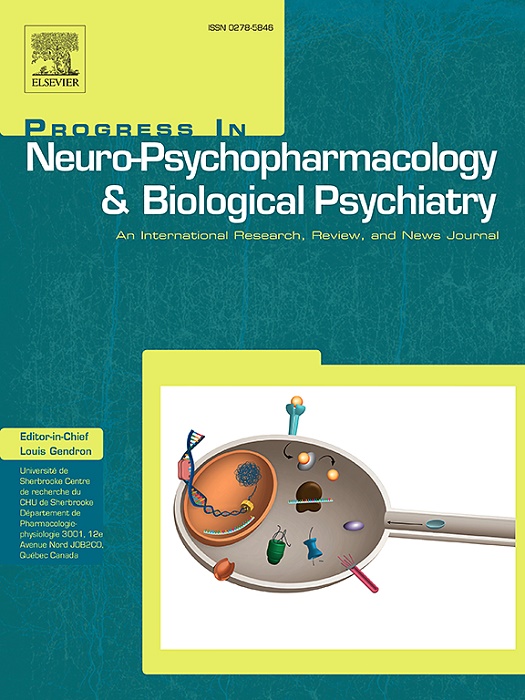Psychostimulants and the cerebellum: Does the cerebellum get involved in the abuse of methamphetamine and cocaine?
IF 3.9
2区 医学
Q1 CLINICAL NEUROLOGY
Progress in Neuro-Psychopharmacology & Biological Psychiatry
Pub Date : 2025-08-24
DOI:10.1016/j.pnpbp.2025.111479
引用次数: 0
Abstract
Clinical evidence suggests that the cerebellum is one of the brain areas most vulnerable to the effects of psychostimulants. Functional neuroimaging studies support the idea that the cerebellum is involved in the neural circuits affected by these drugs. The cerebellum plays a vital role in the brain's reward mechanisms, working in conjunction with the striatum, ventral tegmental area (VTA), and prefrontal cortex (PFC). The cerebellum plays a crucial role in processing rewards and associated emotions. Research indicates that the cerebellum serves as a central hub for regional disconnection during different mood states. This suggests that mental disorders, including mood disorders and substance use disorders, are linked to the circuitry of the cerebellum. This review provides a comprehensive overview of the brain regions affected by methamphetamine (METH) and cocaine, compiling both clinical and animal evidence regarding the involvement of the cerebellum in the abuse of these drugs. We analyze the effects of METH and cocaine on the cerebellum, detailing the resulting changes in various areas, including imaging, molecular, structural, and functional alterations. By exploring the cerebellum's role in the abuse of METH and cocaine, we can improve our understanding of the underlying mechanisms associated with these substances.
精神兴奋剂和小脑:小脑是否与滥用冰毒和可卡因有关?
临床证据表明,小脑是最容易受到精神兴奋剂影响的大脑区域之一。功能性神经影像学研究支持小脑参与这些药物影响的神经回路的观点。小脑在大脑的奖励机制中起着至关重要的作用,它与纹状体、腹侧被盖区(VTA)和前额皮质(PFC)协同工作。小脑在处理奖励和相关情绪方面起着至关重要的作用。研究表明,在不同的情绪状态下,小脑是区域分离的中心枢纽。这表明,包括情绪障碍和物质使用障碍在内的精神障碍与小脑回路有关。这篇综述提供了受甲基苯丙胺和可卡因影响的大脑区域的全面概述,收集了有关小脑参与这些药物滥用的临床和动物证据。我们分析了甲基安非他明和可卡因对小脑的影响,详细说明了在各个领域产生的变化,包括成像、分子、结构和功能改变。通过探索小脑在滥用冰毒和可卡因中的作用,我们可以提高对与这些物质相关的潜在机制的理解。
本文章由计算机程序翻译,如有差异,请以英文原文为准。
求助全文
约1分钟内获得全文
求助全文
来源期刊
CiteScore
12.00
自引率
1.80%
发文量
153
审稿时长
56 days
期刊介绍:
Progress in Neuro-Psychopharmacology & Biological Psychiatry is an international and multidisciplinary journal which aims to ensure the rapid publication of authoritative reviews and research papers dealing with experimental and clinical aspects of neuro-psychopharmacology and biological psychiatry. Issues of the journal are regularly devoted wholly in or in part to a topical subject.
Progress in Neuro-Psychopharmacology & Biological Psychiatry does not publish work on the actions of biological extracts unless the pharmacological active molecular substrate and/or specific receptor binding properties of the extract compounds are elucidated.

 求助内容:
求助内容: 应助结果提醒方式:
应助结果提醒方式:


